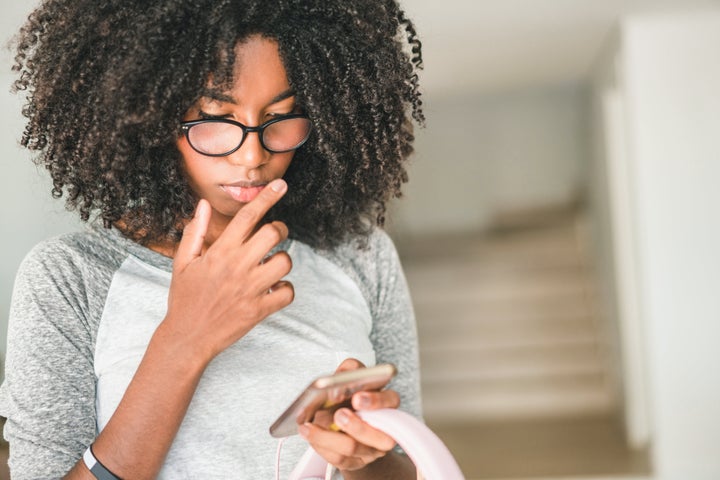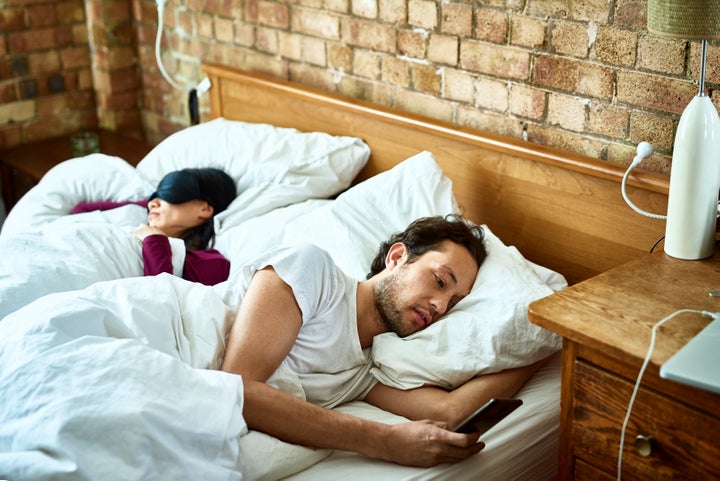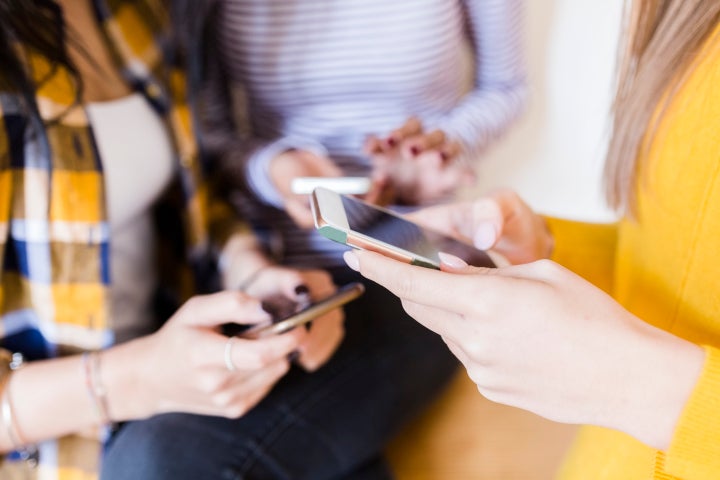At times it seems there’s no limit to the ways smartphones can make our lives more convenient. We have access to all the information the internet can offer in the palms of our hands, we can easily reach people around the world, and as the saying goes, “There’s an app for everything.”
But people have also become incredibly attached to and dependent on smartphones. Wasting hours mindlessly scrolling through Instagram or Twitter is not a unique experience, and many people have reported feeling anxious when they aren’t checking their devices. Studies have even shown that smartphone usage can alter our brain chemistry in ways that severely harm our mental health, diminish productivity, and hamper relationships and the ability to connect with others.
Needless to say, there are many reasons to consider cutting back on your usage. But this task may feel daunting.
“Going ‘cold turkey’ is rarely effective because our iPhones are literally tied into our everyday lives,” Joshua Klapow, a clinical psychologist and adjunct associate professor of public health at the University of Alabama at Birmingham, told HuffPost. “While some see unplugging for days at a time or long stretches at a time as the way to go, behaviorally it poses too much of a challenge against a daily, hourly, sometimes minute-by-minute habit.”
But fear not: There are small ways to change your habits. HuffPost spoke to Klapow and other experts to identify ways to cut back on smartphone usage.
Take Stock Of Your Screen Time
The iPhone’s “Screen Time” feature shows users how much time they’re currently spending on different functions so they can make changes based on actual use, instead of guesses.
Research has suggested that people spend an average of at least three hours on their smartphones each day. “If you think these numbers don’t apply to you, it’s a simple thing to check,” said Liza Kindred, an author, speaker and founder of Mindful Technology, which offers executive education and workshops in meditation and mindfulness for individuals and businesses. “I’m willing to bet that your numbers will surprise you.”
If you have an iPhone, you can go to “Screen Time” under “Settings” and see how much time you’re using your phone for calls, texts, emails, social media, music, movies, etc. The feature also breaks down the specific categories and apps that take up your time, your number of notifications per week, number of pickups, and the functions you use first when you check your phone. Other smartphones have similar features, like Android’s “Digital Wellbeing” tools.

Do A Notification Cleanse
“People have way too many notifications on,” said productivity expert Mark Struczewski, who recommends turning off the majority of them ― especially for social media.
Things like text messages, calendar reminders and credit card fraud alerts can be OK, but other notifications generally interrupt productivity and distract people from forming connections with others in real life.
There are also studies suggesting that notifications add to those dopamine boosts that make us so attached to our phones. “Don’t become a Pavlov’s dog and respond viscerally to every notification,” said Larry Rosen, professor emeritus and past chair of the psychology department at California State University Dominguez Hills. Minimizing notifications helps to break that feedback loop.
Put Your Phone In Grayscale Mode
Most things about smartphones are meant to draw you in and keep you engaged. That includes how they look. Many people have found that switching their phones to grayscale mode tempers the temptation check them.
“Turn the color off on your screen. It instantly makes the phone a lot less appealing,” David Greenfield, founder and medical director of the Center for Internet and Technology Addiction and assistant clinical professor of psychiatry at the University of Connecticut School of Medicine, told HuffPost. “You’re not going to be as intrigued by what you see on the screen and scrolling through.”
Rearrange Your Apps
Another way to take power over the visual allure of your phone is to do some rearranging.
“Limit what’s on your home screen and hide tempting apps in folders,” Kindred said. This tactic diminishes the convenience of distractions.
Christopher K. Lee, founder of the career consulting firm PurposeRedeemed.com, said a friend of his combined those tips by putting all of his social media apps into a folder on the second page.
“Even though he could still access the apps, adding a few steps create a bit of psychological distance,” Lee said. “It discourages him from going through the trouble to open an app he had no real purpose for opening at that time. He is less tempted to needlessly spend time on his phone, since they are ‘out of sight, out of mind.’”
“If you actually want to have intimacy and connection with people or get any sort of work done, your phone cannot be within sight or earshot.”
You can also fully delete the apps that you’re more likely to check incessantly and pledge to only do certain digital activities ― like checking social media ― on a computer.
Don’t Use Vibrations
“Vibration mode is a productivity killer,” Struczewski said. “People think they’re doing the right thing by putting their phones facedown and turning the sound off. But what happens when it vibrates?”
Smartphone users can minimize the temptation to check their phones by choosing the specific kinds of alerts that will cause vibrations and keeping everything else on full silence.
Keep Your Phone Out Of Sight
“People out together commonly put their phones face down on a table as a deliberate show of respect,” said Catherine Price, a journalist and author of “How to Break Up with Your Phone.” “But in my view, that supposed gesture of respect is actually kind of middle finger to the other person because what you’ve done is place your phone between you and the person you’re supposedly connecting with.”
Research has shown that having your phone in front of you ― even if it’s face-down or off ― is associated with worse performance on mentally challenging tasks and a reduction in the perceived quality of conversation and connection between two people.
“If you actually want to have intimacy and connection with people or get any sort of work done, your phone cannot be within sight or earshot,” Price said. “Put your phone in your bag on silent and don’t check it during the duration of your time with the person or work. And if you have to check it, treat it like you’re taking a bathroom or cigarette break. Ask permission to excuse yourself and leave the table to do it.”
Buy An Alarm Clock
Keeping your phone in the bedroom increases the urge to check it, especially in the evening, so it may be best to stop using it as an alarm.
“Don’t use your screen one to two hours before bedtime. Studies show that using a device before bed leads to later bedtimes, disrupts the circadian rhythm, increases morning sleepiness and suppresses the sleep-promoting hormone melatonin,” said Pamela Hurst-Della Pietra, the founder of the nonprofit Children and Screens. She recommends charging your phone outside your bedroom overnight and instead putting a digital alarm clock on your bedside table.

“When you awaken in the morning, give yourself some screen-free time before you unlock your phone and check your emails, texts or social media,” she added. “Wait until you’re in the office or your kids are off at school before fully engaging in answering emails, texts or calls.”
Set Small, Gradual Goals
Klapow believes the most effective way to curb smartphone use is to make small, gradual cuts. Fortunately, the Screen Time feature allows iPhone users to set “App Limits” and tracks their progress.
“The more reachable the goal, the better,” he said, noting that you may want to go from three hours a day on social media to two and a half, or four hours a day on texting to three and a half. “Make a list of what is priority and what is less priority ― phone, text, email vs. social media apps ― and set a reachable daily goal for curbing your time in specific areas. You can literally limit yourself by choosing how much time you want to spend in each category before your iPhone will cut you off.”
It’s important not to feel like you’re depriving yourself. “The more the changes feel restrictive and the more they create distress, the less likely you are to stick with them,” said Klapow, who added that setting gradual goals will help users find a “comfort zone of reduction” without totally denying themselves. “This is about evolving how you use the phone more so than not using it at all.”
Find Accountability Partners
Cutting back on your smartphone usage doesn’t have to be a solo endeavor.
“You can involve others to limit your phone use,” Lee said. “Ask a close friend to keep you accountable, checking up each week to see how you’re tracking with your goal. You can also commit with your friends or significant other not to use your phones when you’re together.”
Stop Trying To Multitask
You may think you’re able to check your phone while simultaneously catching up with friends or listening to a podcast, but according to Greenfield, this is simply not true.
“There’s no such thing as multitasking,” he said. “We have to attend to one stream of information at a time, and the more inputs we are monitoring, the longer it takes to accomplish the tasks at hand.”
The sooner you can accept this reality, the easier it will be to put your phone down and focus on the person or task in front of you.
Designate Phone-Free Times
As you work to spend less time on your smartphone, it may be helpful to designate specific phone-free times during the day or week. You could start by choosing a time for a weekly phone-free walk, for example.
“You have a finite amount of time on earth. Your phone is designed to steal as much of your time and attention as possible because that is how app-makers make money.”
“Shoot for the ability to set a ‘do not disturb’ for 30 minutes at a time with one-minute tech breaks,” Rosen recommended. “Alert your friends and others that you are doing this, so they don’t get upset that you are no longer responding immediately. Take 10-15 minute breaks every 60-90 minutes of tech use and do something that we know from neuroscience calms your brain, such as visiting a natural environment, exercising or talking to a person live.”
You can also designate tech-free zones like your desk or the dinner table. On the flip side, it may be helpful to set aside times specifically for your phone.
“Giving yourself specific hours and times throughout the day to really check your messages, scroll through social media, and digest content on your phone is key,” said John Furneaux, CEO and co-founder of Hive, a productivity platform for high-performing teams. “If you’re doing this every hour, it’s costing you in a big way. Block off a few designated times during the workday to check your non-work related notifications.”
Focus On Other Activities And Hobbies
“People fiddle with their phone when they have nothing to do intentionally,” Lee said. “Having a hobby or other activity adds meaning and structure to your schedule.”
Instead of scrolling through your phone, try to spend time outdoors, dive into a new book, volunteer for a cause you support, talk to friends and family or cultivate a new hobby like playing a sport or a musical instrument.
“The key … is to identify what need your phone use fulfills ― like relaxation or socializing ― and replace it with an activity that satisfies that same need,” Lee said, crediting a friend for the idea.
“Often people default to checking their phones when they have five or 10 minutes to spare ― as they wait for a friend or the bus or class or an appointment. Many people feel uncomfortable with doing nothing,” he continued. “You could find a new way to fill these in-between times. For example, you could commit to reading or talking with the people around you.”
Understand That It’s Supposed To Tempt You
Shifting your mindset can help make these small changes easier to accomplish.
“The number one thing that I want people to know is that your phone and the apps on it are intentionally designed to be addictive,” Kindred explained. “It’s not a neutral technology. There are people studying how to make you spend more time staring into your screen to your detriment and their benefit.”

Understanding this reality can foster a philosophical shift and help you realize your smartphone fixation is not a character flaw or failure. And it may motivate you to reclaim your time.
“You have a finite amount of time on earth. Your phone is designed to steal as much of your time and attention as possible because that is how app-makers make money,” Price said. “It’s a daily battle to not let that happen. Realize that every moment you’re spending on that is a moment you’re not spending on something else ― not spending on your friends, family, children, work or anything else that brings you meaning or joy. The opportunity costs are enormous.”
Many people check their smartphones due to a fear of missing out on information or experiences — FOMO — because looking at your phone can give you a dopamine boost. But Price encourages people to focus instead on the joy of missing out.
“Think of the good things we get from not being on our phones ― the conversations, the emotional connections with others, the intimacy, the experiences,” she said. “Have a moment of JOMO where you leave your phone at your desk while you go to lunch, go for a walk without your phone or take your dog out without your phone. Break free from the shackles that we have allowed to be put onto ourselves.”
Source: Read Full Article
